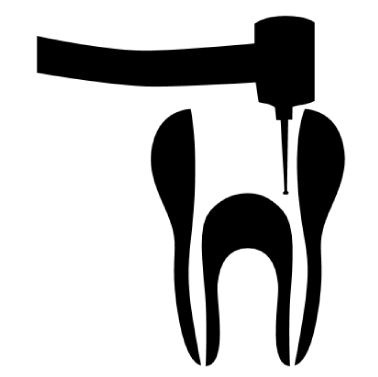What is a Root Canal Treatment?
RCT is also known as endodontic therapy. The crown, or the portion of the natural tooth that is visible, is sheltered by the dental enamel underneath the gums, and the tooth is protected by the dentine, all the way to the tip of the root. Dentine is by nature a hard material, although not as hard as the enamel. Within this reinforced cage, and down to the roots, is an extensive cavity referred to as the canal. It is packed with dental pulp, otherwise named the pulp chamber. The pulp holds the blood vessels, which nourish the tooth, in addition to the nerve tissue and other matter. But whenever the pulp is infected extreme pressure accumulates within the pulp because bacterial stuff and debris are formed. Such a situation causes considerable discomfort as well as agonizing pain. A root canal near Lake Elsinore can get rid of the infected pulp from the tooth, often causing immediate relief. It is the foremost treatment that most dentists offer in order to avoid an extraction. It is somewhat safe to get this procedure even if you have braces, if not other oral issues. Also, the permanence of the results is well-worth the treatment, if you consider the discomfort and severe pain.

How Can a Root Canal Become Infected?
Now, you are probably asking “How does the pulp inside a well protected tooth become infected?” The food you eat can attack the enamel. You would imagine that you can choose what foods to eat. However, food particles will stick onto your teeth long after you are done eating, particularly in inter-dental gaps on the molars’ chewing surfaces, or the teeth at the back. If you do not brush and floss constantly, the bacteria that are always inside your mouth will get the chance to convert the sugar and carbohydrates in those particles into sugar. The acid will lower the ability of the saliva to protect the enamel, and then the enamel will begin eroding the tooth, which can result to cavities. If these cavities are not sufficiently filled, then the enamel is going to be punctured soon and the infection will get to the pulp.
The bacteria in the mouth can also infect the gums. Loosening of gums can expose and puncture the dentin layer underneath the gum and this can provide an infection route to the pulp. Whatever the route of infection, the pulp must be eliminated to avoid repeated infection. If this is not done, an abscess can develop and will require an extraction in the end.
Bacteria inside the mouth can cause gum infection as well. Slackening of the gums will expose as well as puncture the layer of dentin underneath the gums.
There can be other causes why pulp infection takes place, including a dental injury that is left untreated, a crack or chip in the tooth, and perhaps a repeated tooth restoration.
When Does a Root Canal Procedure Become Necessary?
This treatment is used to address multiple issues such as inflamed, dying, or dead nerves, and also cracked teeth or even a tooth that is already dead. It can as well be a retreatment of a previous unsuccessful RCT. Sometimes, it becomes necessary to take out the nerves, if not the teeth. The ultimate decision to choose this procedure is going to be made by you and one of the skillful dentists on our team after hearing your concerns and examining you carefully.
The procedure is usually completed in at least two visits. On the second visit, the patient together with the dentist will check how everything is going and then determine if any additional work is needed. Dentists, who are very confident, may sometimes eliminate the temporary filling and directly proceed with the permanent one during the initial visit. In such cases, the needed recovery time is not at all very long.
American Association of Endodontists states that “The effectiveness of root canal treatment is well-established.”
Early Symptoms That a Root Canal Maybe Necessary
- Toothache
- Infection
- Swelling
- Extreme sensitivity to heat and cold.
What the Dentist May Want to Know about Your Symptoms
- The site of the pain and/or swelling
- The pain duration
- Onset
- Kind of pain (if it is continuous or else pulsed)
Signs Observable to your Dentist
Perhaps you are unaware that the pulp is already developing a problem until it becomes too late. However, a number of signs are probably more evident to your dentist.
- Color of tooth.
- Indications of pus discharge
- Visible soft tissue changes, as well as asymmetry.
Tests
These signs are probably insufficient for an evident or definite diagnosis. Thus, it may become necessary to perform some additional tests. The tests that are available to identify a faulty tooth are X-ray, thermal sensation, percussion, along with electronics pulp testing.
Make an appointment with us if you’re near Lake Elsinore CA.
Root Canal Procedure
- Imaging – The initial step of this procedure is to perform an assessment of the problematic tooth’s condition. We make use of X-ray imaging to determine the damage, in addition to the configuration of the roots. The teeth at the back can have several roots and the infection could be in any number of them. The dentist has to identify the infected root beforehand and its orientation as well.
- Sedation – Thisl treatment calls for surgery. So, local anesthesia is used before the procedure at all times.
- Opening of the Canal – A number of patients may require sedation before anesthesia is administered. After local anesthesia has been given, an opening is drilled through the enamel to uncover the problem areas. This instantly discharges the pressure within, and the patient is not going to feel whatever pain even when the anesthesia has already worn away. For the molars, drilling is done in the crown or from the lingual side, if it is a tooth in front.
- Cleaning – The tooth that is involved in the root canal is going to be absolutely evacuated by taking away the nerve tissue along with all other pulp substances. After that, the canal is flushed fully and then dried.

- Sealing – The space should not be left empty; otherwise, there is the risk of a repeat abscess or infection. We are going to fill the hollow canal with gutta percha, a rubber-like material, together with a sealant solution so that there will be no more empty space inside.
- Temporary Filling – As the mouth is healing, the fresh hole is covered using a temporary filling.
- Permanent Sealing – If everything goes well and if the patient does not have any complaint, a permanent filling will take the place of the temporary one during the next visit.
Why Is Crown Placement Required after Surgery?
This procedure can result in the tooth having thinner walls, making it more vulnerable. We advise that it be supported by a dental crown once complete healing is achieved.
If you opt for the crown, we will provide you with a temporary crown right away and send your impressions to the laboratory for your permanent one to be made. Another visit is then going to be required for the purpose of fitting the crown. In some instances, additional work is needed to get it ready for the crown, especially if the tooth is weak or broken.
Discover Root Canal Therapy near me
Root Canal, Lake Elsinore, CA
Give us a call for Same day Appointment for Emergency Root Canal near Lake Elsinore, CA to discuss your dental needs. Our dental care experts will make sure to answer all your questions, so you can be confident about your decision. We are nearby Canyon Lake & Wildomar.







